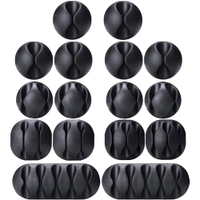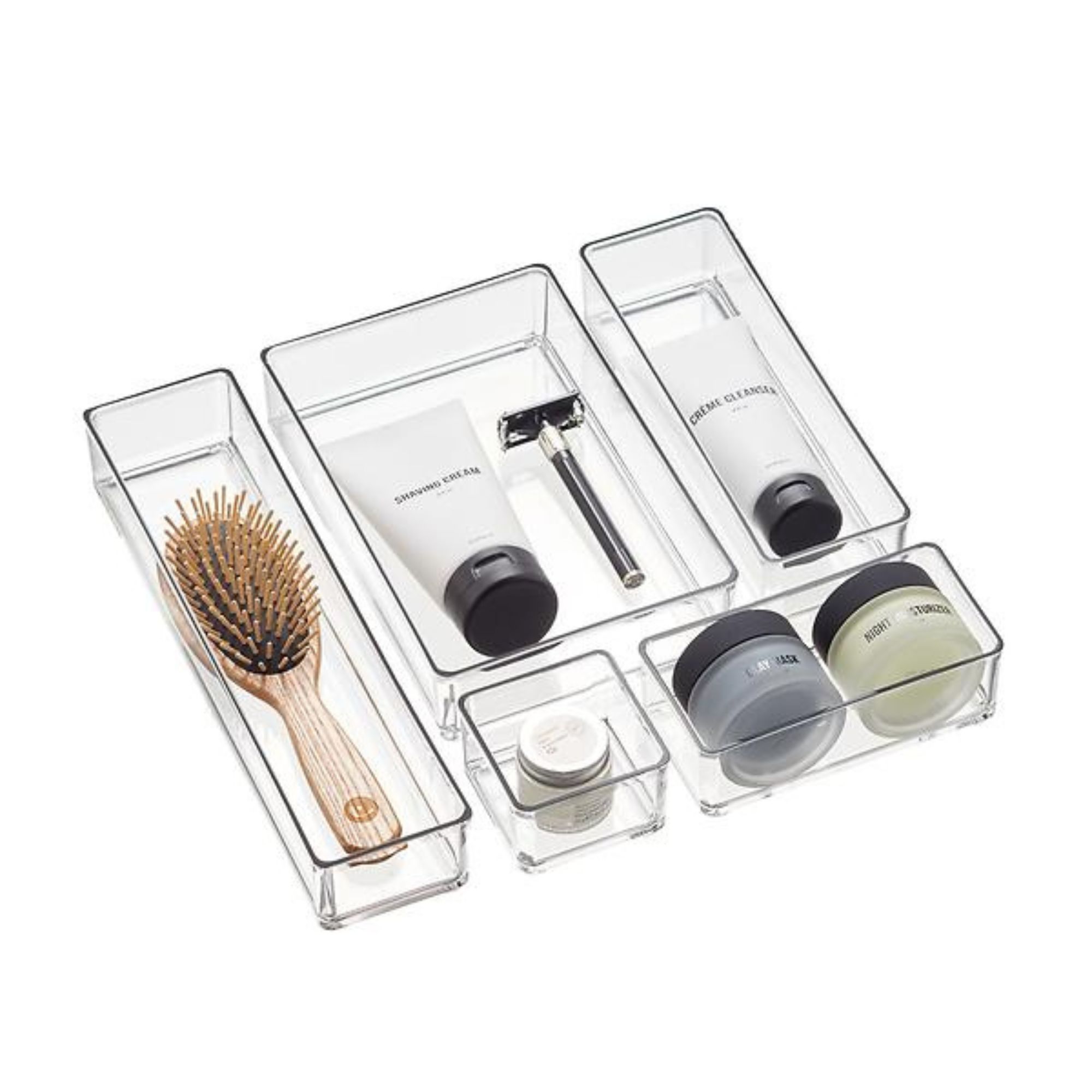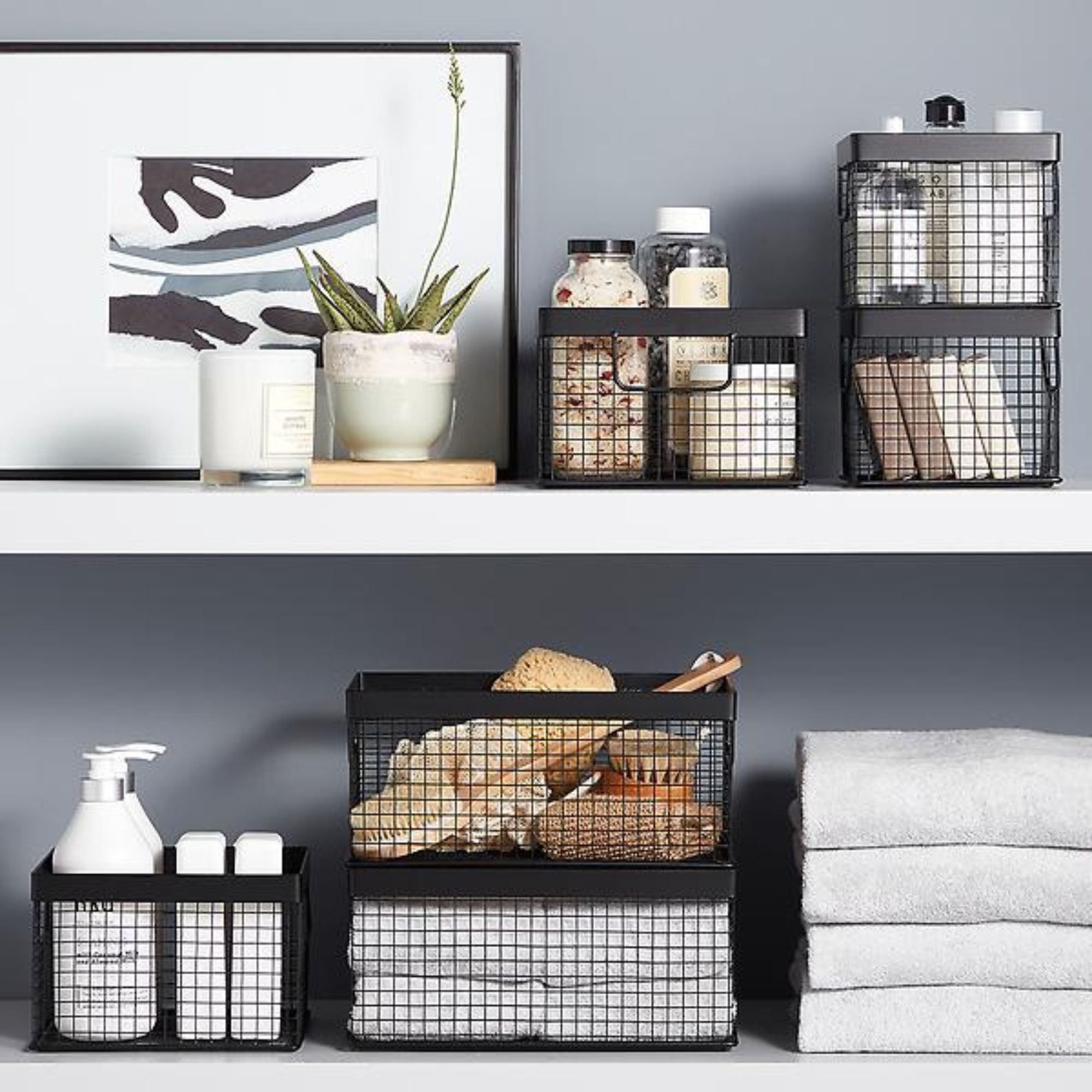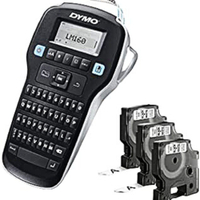These 21 January decluttering rules – suggested by experts – help reset a home for a fresh start
Out with the old, in with the new – use these January declutter rules to reset a home from top to bottom
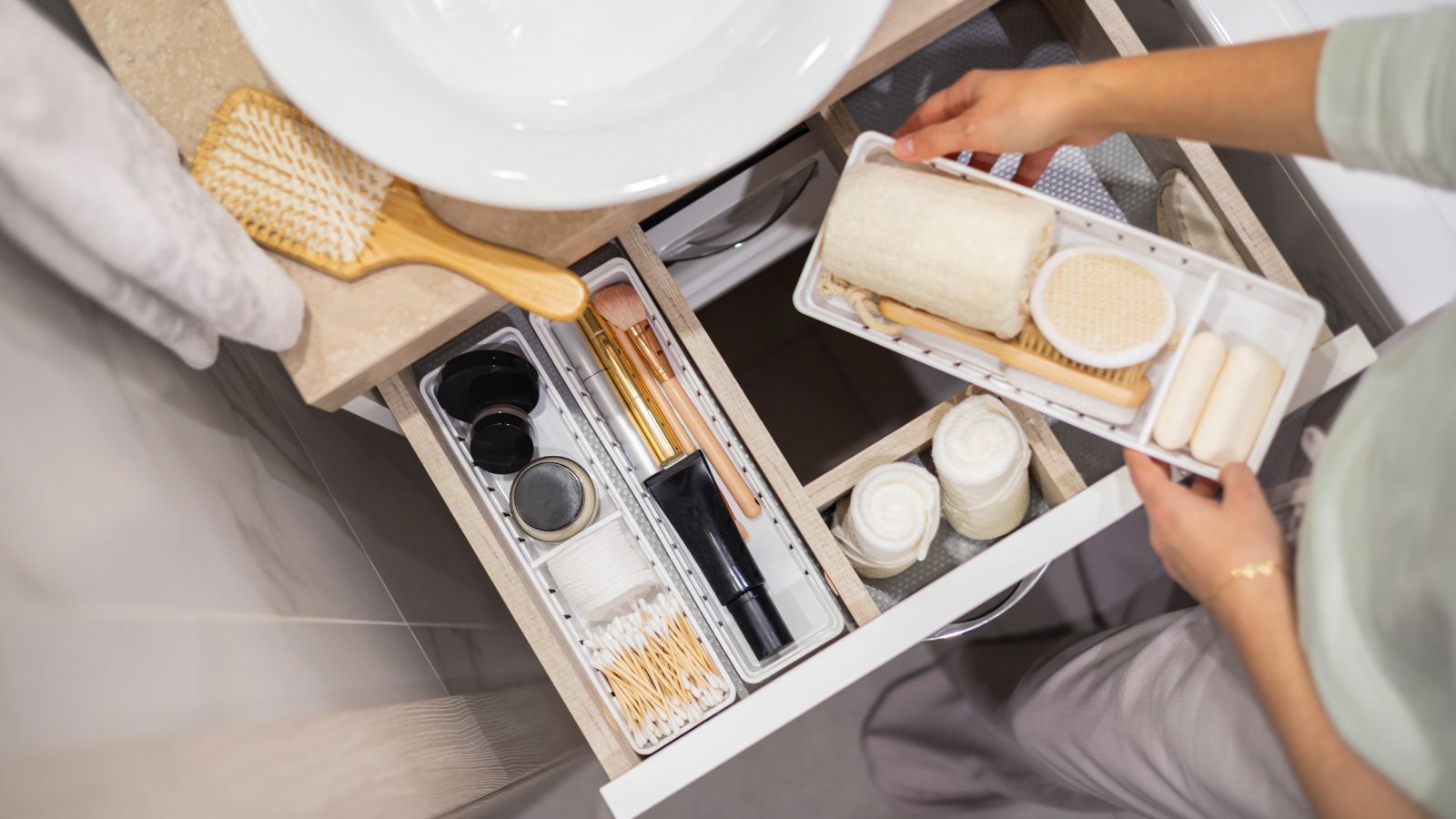

Whenever January rolls around it is easy to feel bogged down in a surplus of stuff, especially if you have had a particularly bountiful Christmas. That is why experts recommend a good January declutter to help refresh your home.
It is often easier to pick up decluttering tips and be ruthless with your belongings at the start of a New Year at the same time as you set personal goals and resolve to put your newly replenished determination to good use. But what are the January declutter rules that experts swear by?
We asked professional organizers and the H&G team for their thoughts on what you should clear out to help refresh your home, and your mind, in January.
January decluttering rules
The best way to tackle a huge home declutter is to move through the rooms one at a time to help you keep a track of what you have achieved, and how much you have left to go. 'I would always start with the most-seen areas, and those you use most,' says Lucy Searle, Editor in Chief of Homes & Gardens. 'Avoid falling into the trap of decluttering the guest bedroom first, then running out of steam before you get to more important rooms.'
‘A necessary step for streamlined living, decluttering should be at the top of your to-do list in January,’ says designer and founder of AMC Design, Ann Marie Cousins. ‘Over the year, we naturally accumulate items without realizing, so it’s vital to start the New Year with a clean slate. There’s no better feeling than being on top of things and knowing where everything lives, so go through each room thoroughly and always donate or upcycle where you can.’
1. Start with the entryway

Decluttering and organizing an entryway is a great starting point when tackling a whole home. Not only is it the first area guests see, meaning it needs to be in top condition, but it is one of the smaller spaces in a home, meaning it is quicker to complete and achieve the satisfied feeling needed to carry you through decluttering the rest of the home.
One of the most common decluttering mistakes is tackling larger projects first, and giving up halfway through when you don't feel like you have achieved anything yet.
2. Remove items from entryways and stairs that belong elsewhere
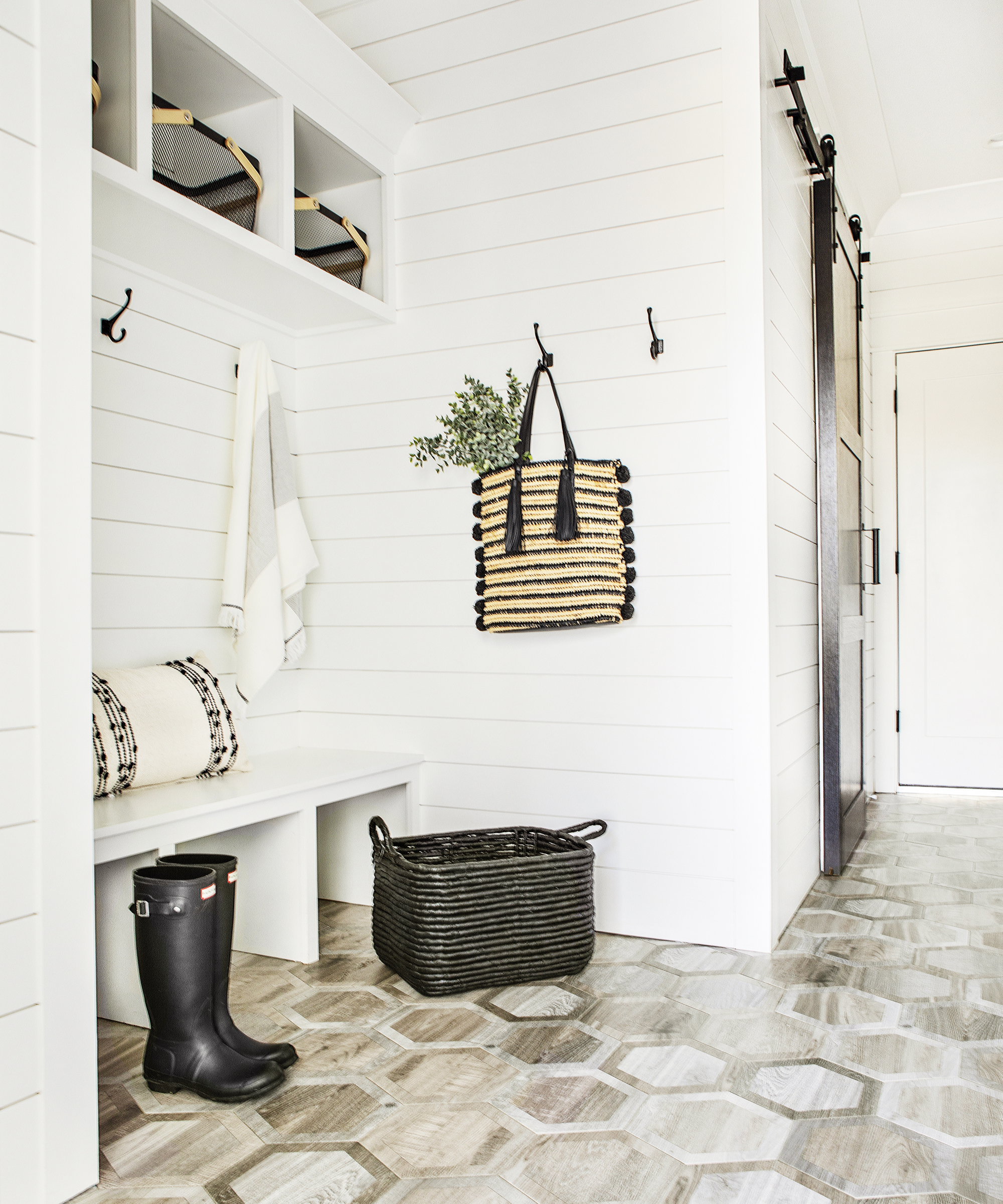
Tidying up shoes and coats is an everyday tidying task for an entryway, so when looking to declutter the space, focus on what shouldn't be there over what should.
Given that entryways are a landing pad for coming in and out and going upstairs for most of us, it is easy to put things down with the plan to move them next time we pass but neglect to each time. Make sure to clear stairways of items that should have gone upstairs a week ago and move any clothes that should be living in the bedroom closet off of hangers and out of shoe bins.
If you have things by the door waiting to be taken somewhere else, put a plan in your diary to shift these things to outdoor recycling or to the car to be dropped off at the right places within a week of your home decluttering.
'Use this as an opportunity to work out if you need better or more shoe storage, or more practical ideas for your entryway closet. If your entryway is constantly overwhelmed, not just in January, now is the perfect time to put a plan in place.'
3. Clear floor space by making the most of walls
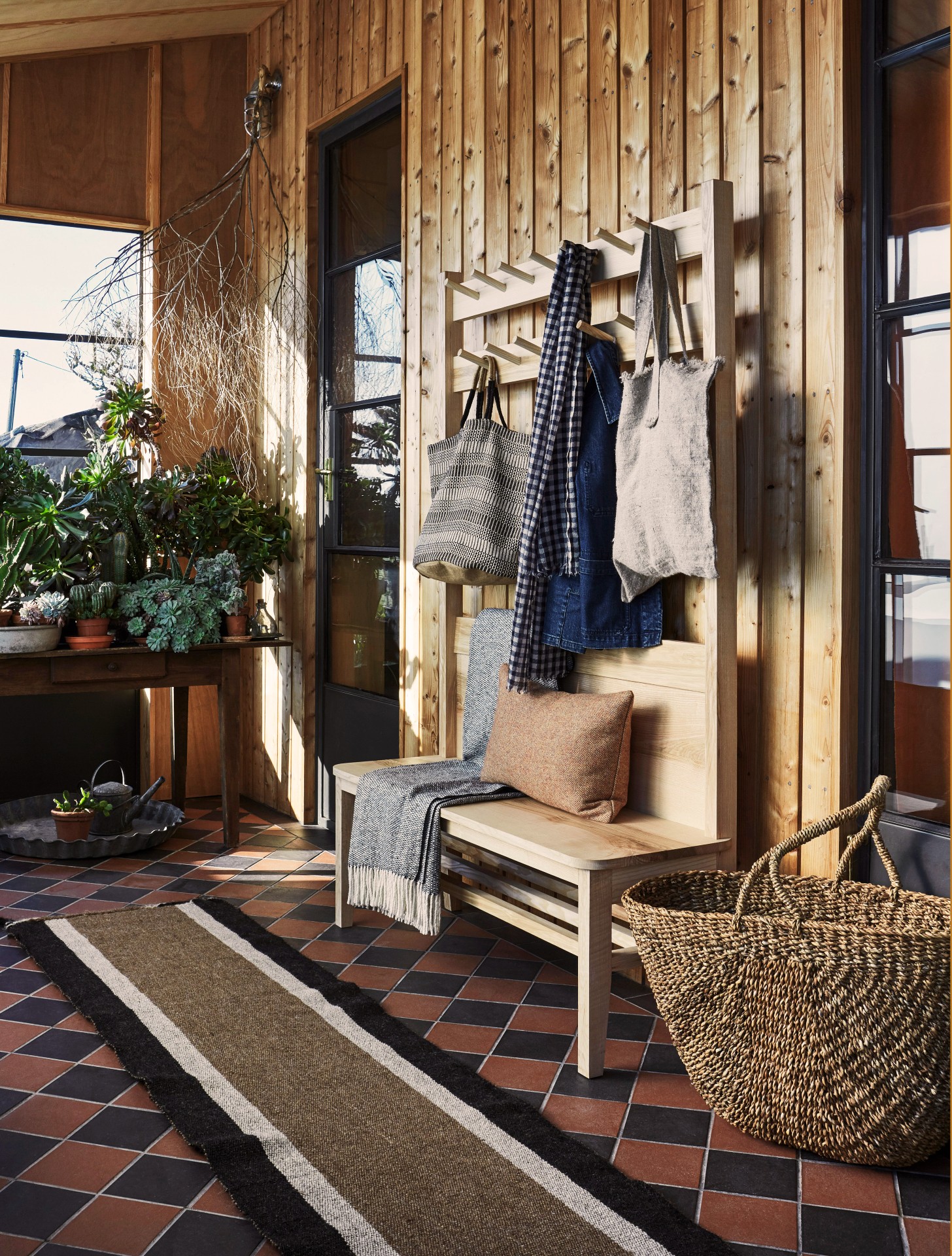
'An entryway is a part of your home with a lot of traffic, meaning floor space is scarce. But it’s also your home's first impression, so you shouldn’t skimp on style or design. In a narrow entryway you should make use of the height and wall spaces as much as possible,' says CMO at String Furniture, Bo Hellberg. This means excellent entryway storage ideas.
'You should opt for a mix of open and closed storage, providing an opportunity for organization and efficiency, making family life a whole lot easier,' adds design director of the eponymous kitchen brand, Tom Howley. 'Floor-to-ceiling solutions are excellent for bulky seasonal outdoor items which may not be used often. You can incorporate shelving and baskets into tall closets for bags, boots, and other paraphernalia, even personalizing these spaces for each family member.'
4. Move on to the living room
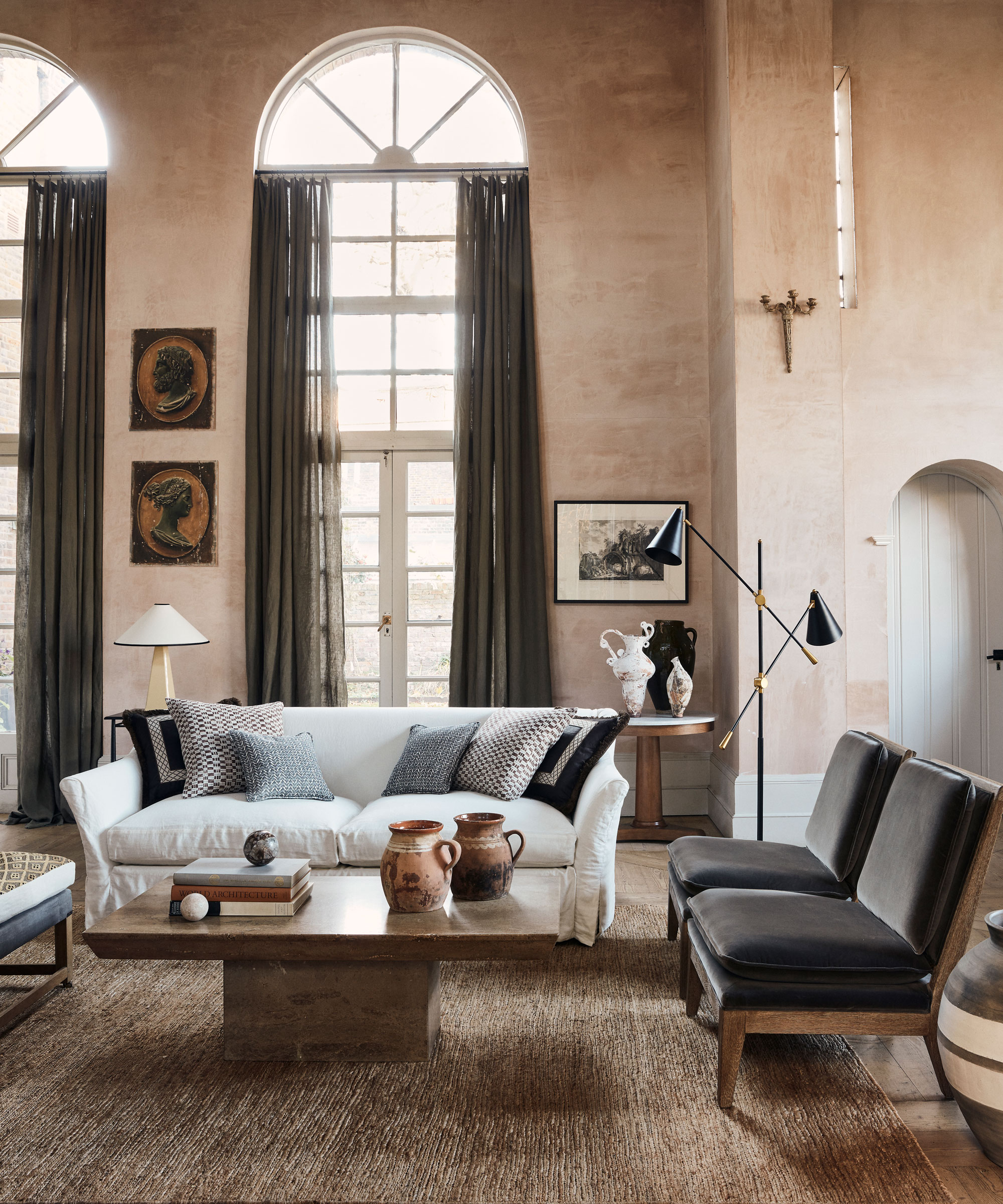
Entryway done, move on to the living room. Organizing a living room in the New Year can be daunting, especially if you have a large family who all use the space.
Living rooms often become a natural dumping zone in everyday life, and while your January decluttering and tidying may not last till the end of next month, getting rid of any build-up of misplaced belongings here will help prevent clutter from getting out of control as quickly.
'If, by the time you reach the living room you are beginning to lose interest, switch to the "one bag a day" declutter method,' suggests H&G's organizing expert Millie Hurst. 'It simply means that you don't try to tackle more than one bag of clutter a day, so you won't feel overwhelmed when decluttering, and can go at a pace that fits around work, children, friends and life.'
5. Cut back on surface clutter
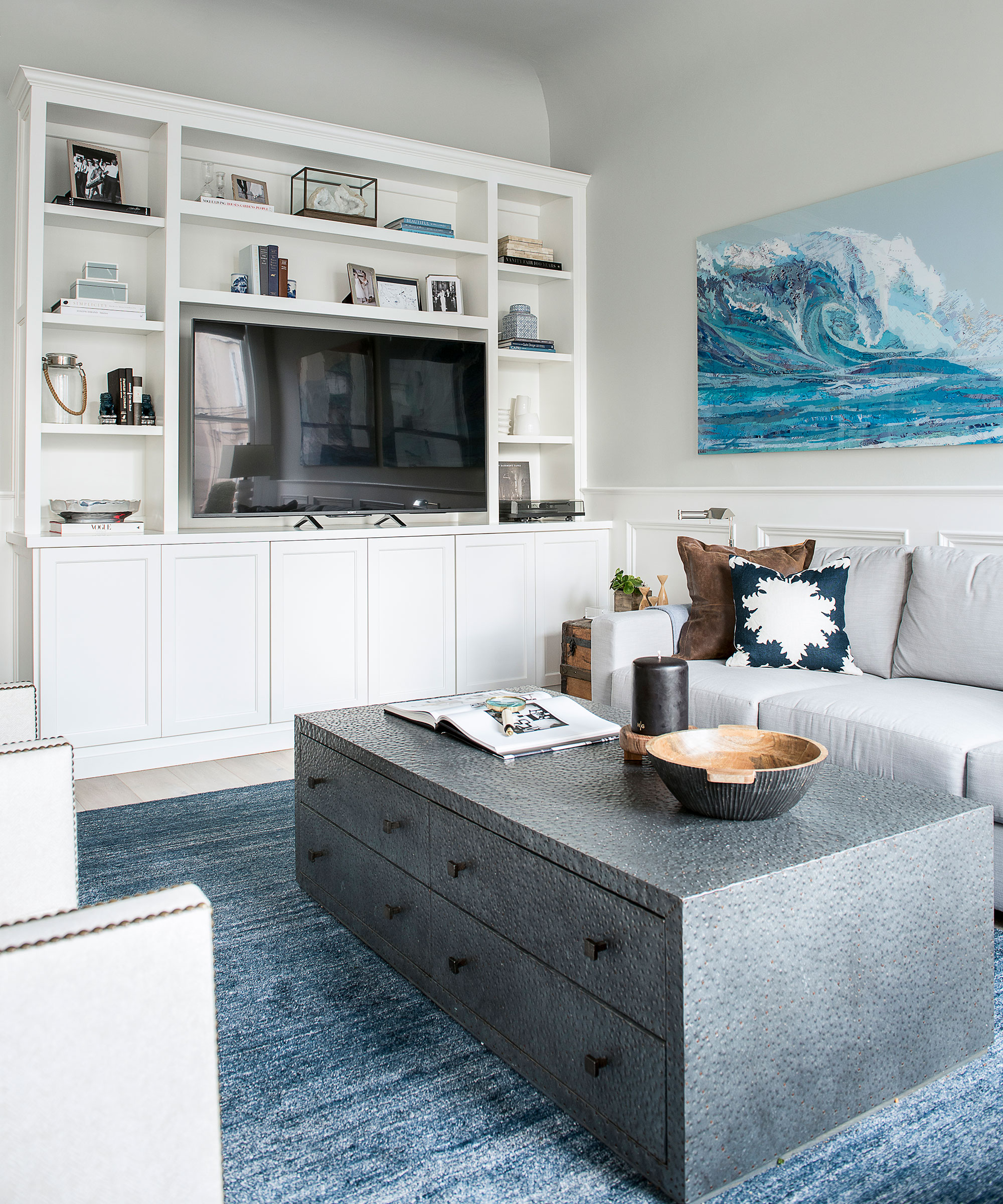
Start by taking stock of everything on the visible flat surfaces around your living room, making a mental note of everything that needs to be moved.
Proceed by clearing off surfaces, using a basket to collect items that need to move to other rooms such as a stranded sweater, or a book from the home office, giving freed-up surfaces a wipe-down with a nice smelling cleaning spray as you go.
Get rid of old magazines that are over-thumbed or that no longer interest you, and move remote controls to their proper keeping places or out of sight. Replump sofa cushions and fold away throw blankets while you are going around, making sure to throw anything in the laundry that needs a freshen-up.
A January declutter is a great time to also take stock of your home decor and decide what you love, and what should go. Changing out decor is an easy way of refreshing your home for the New Year without completely redecorating. Plus, take time to reassess living room storage ideas to see if these need adding to; even something as simple as swapping out a top-only coffee table for one with plentiful built in storage can make a huge difference.
6. Don't disregard your drawers and cabinets
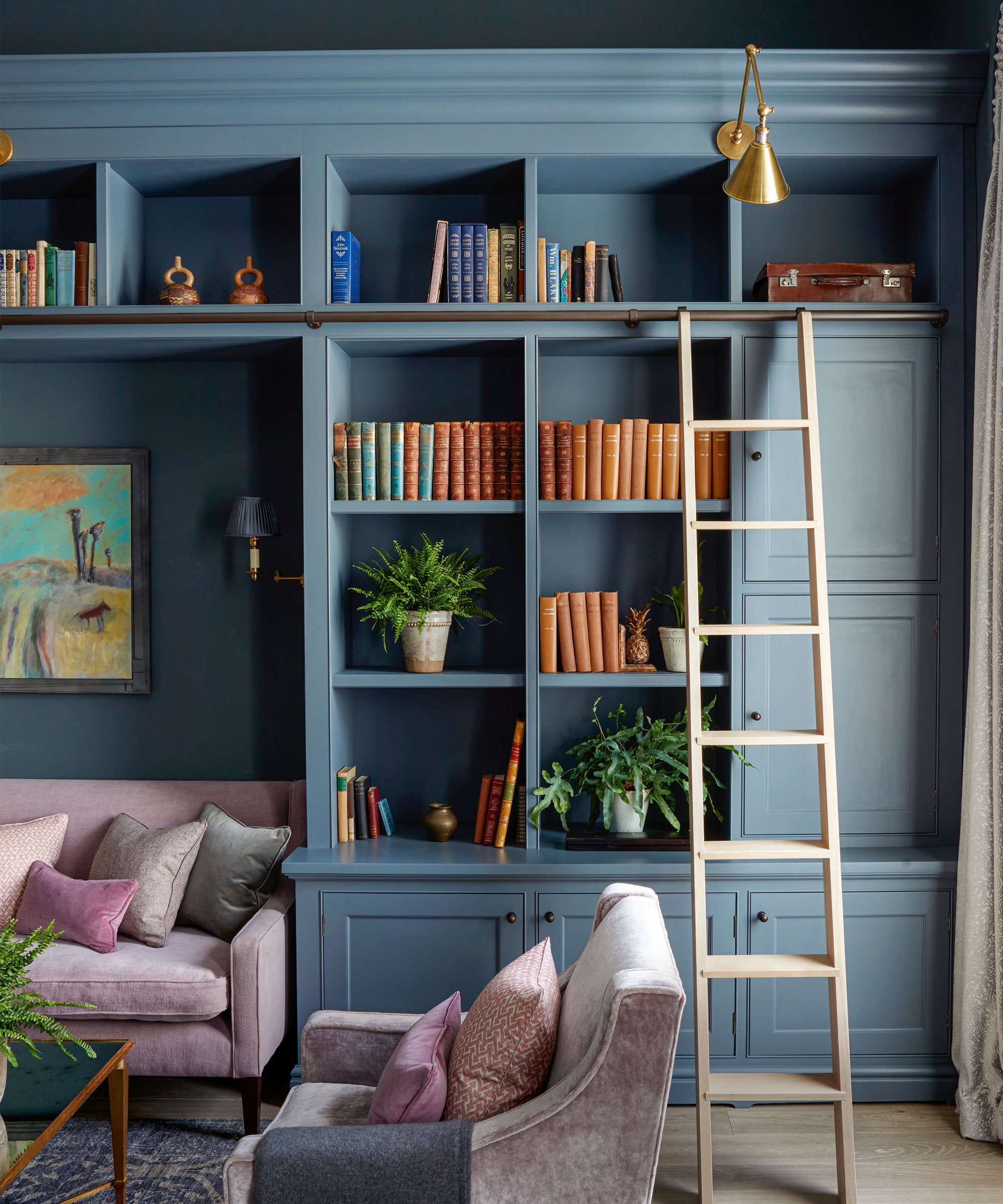
Once you have focused on what is on display, use the whole home declutter as motivation to go through any drawers and cabinets you may have in the living room as well, cutting back on unused cables, games no one plays anymore, or which are missing pieces, and any other random junk that has been hidden away behind cabinet doors.
With the rise of streaming, consider your DVD and CD collections too, moving any you don't use to a donate pile if they are unscratched and in good condition.
'Every home, and sometimes every room, has a clutter drawer,' says Lucy Searle. 'This is where you might keep all those cables and chargers, remote control batteries, and so on. There's nothing wrong with this: in fact, a clutter drawer can cut down on clutter elsewhere, and everyone will know it's the place to go for those items.'
7. Clear away children's toys
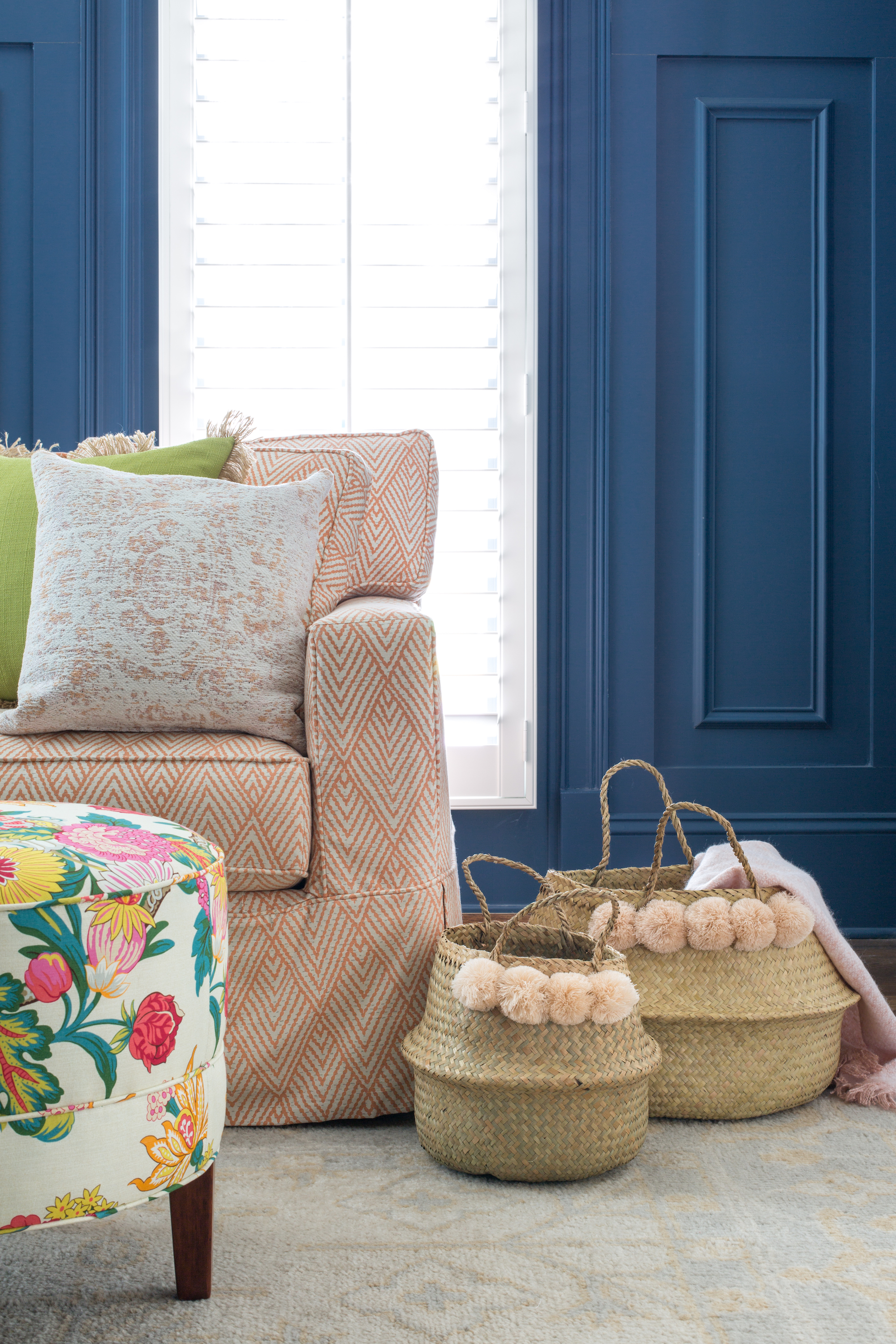
If you have children, use this time to declutter toys laying around the living room that have been abandoned in favor of new Christmas gifts, checking behind and under furniture for any long-lost toys too.
Any that are here to stay should be put tidily away in a toy storage basket that is within safe and easy reach of small hands.
'When my children were younger, there were always some toys that repeatedly appeared in the living room,' says Lucy Searle. 'Rather than having the scattered about, I had an ottoman with a lift-up lid as a footstool opposite the sofa. It was perfect for stashing away the kids' toys effortlessly at the end of every day so that we could ready the room for a relaxing evening.'
8. Cut back on the subscriptions on your TV too
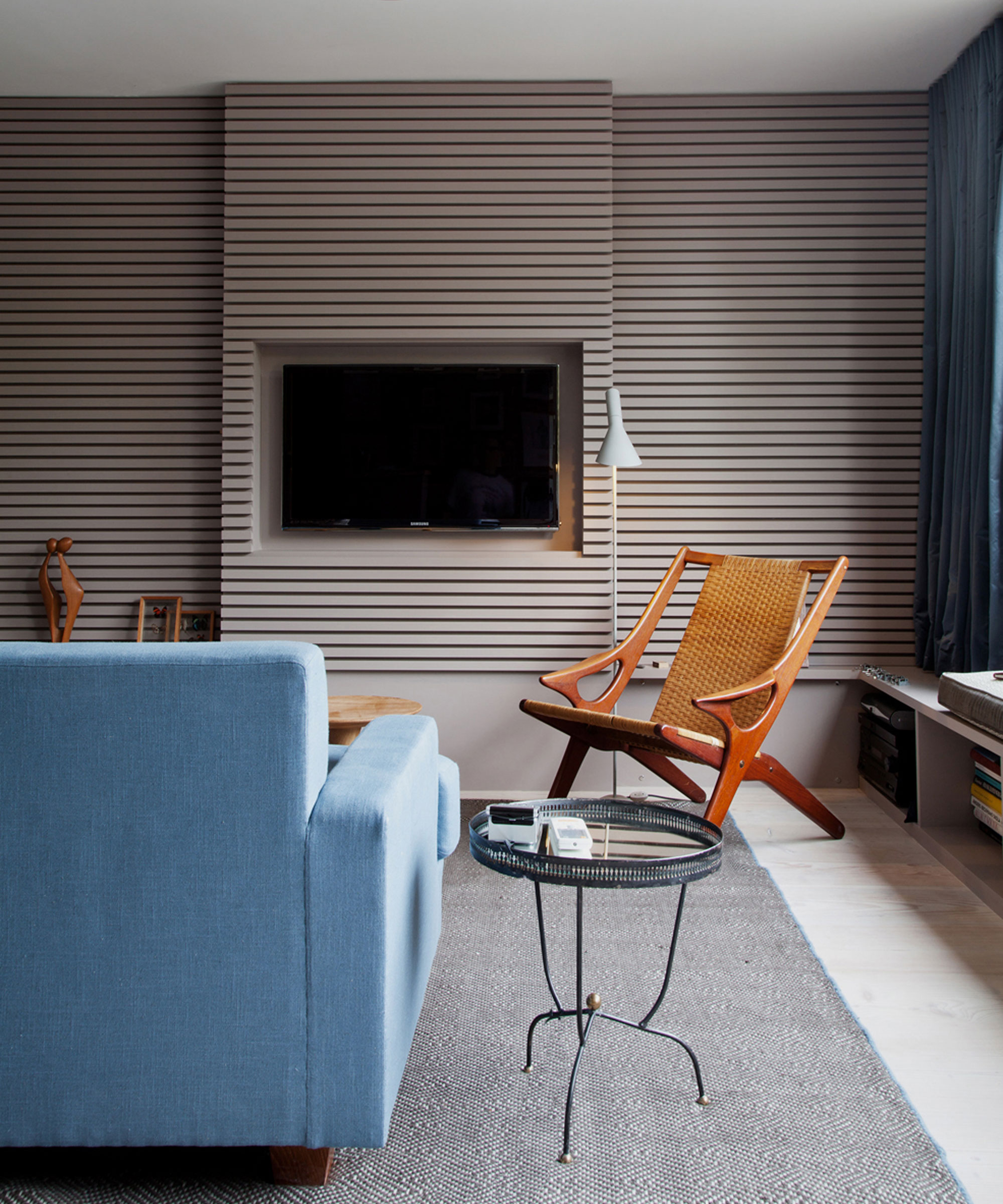
While in the living room, take a look at the apps and subscriptions you may have on your TV. Consider which of these you use, and which have been subpar as of late, and decide if you would be better off without some of them cluttering up your bank statements.
‘The start of the New Year means you set goals for the upcoming year. One of those is usually cutting down on unnecessary spending,’ says Craig Hoareau, APDO member and managing director of A Tidy Mind London. ‘Have a look at all subscriptions you have and declutter those you have not/will not use.’
9. Next? Declutter kitchen countertops
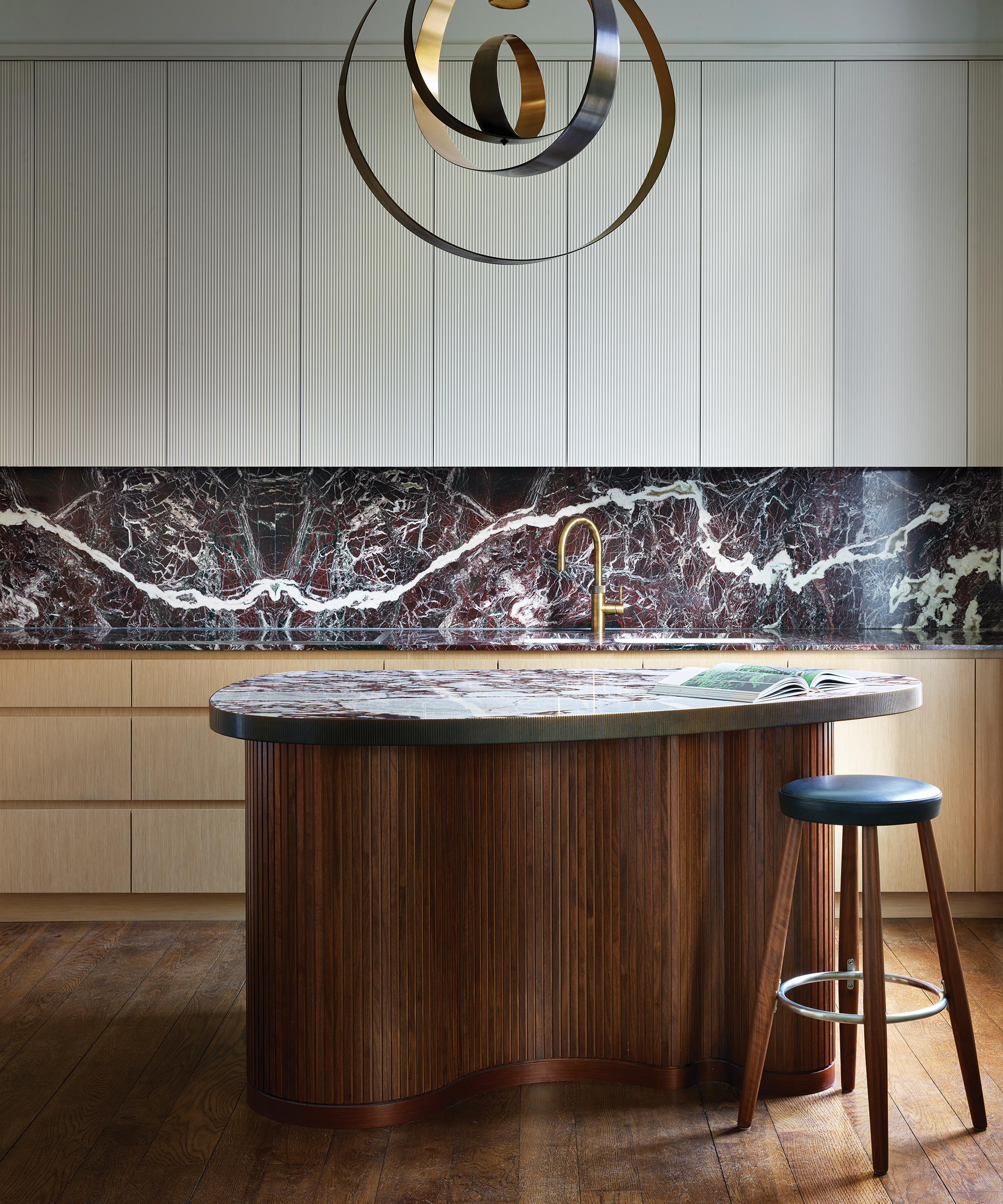
Decluttering and organizing a kitchen in the New Year is inevitable, from organizing Tupperware to getting rid of chipped serving ware that you no longer deem fit for serving guests with.
'Tackle organizing kitchen countertops as your first job,' advises Lucy Searle. 'This is likely where clutter has gathered, but can be quickly and easily dispersed. Clearing the decks like this will, visually, make the most impact, making your kitchen look clearer and larger, before you even open a single cabinet.'
9. Take inventory of holiday food and declutter cabinets
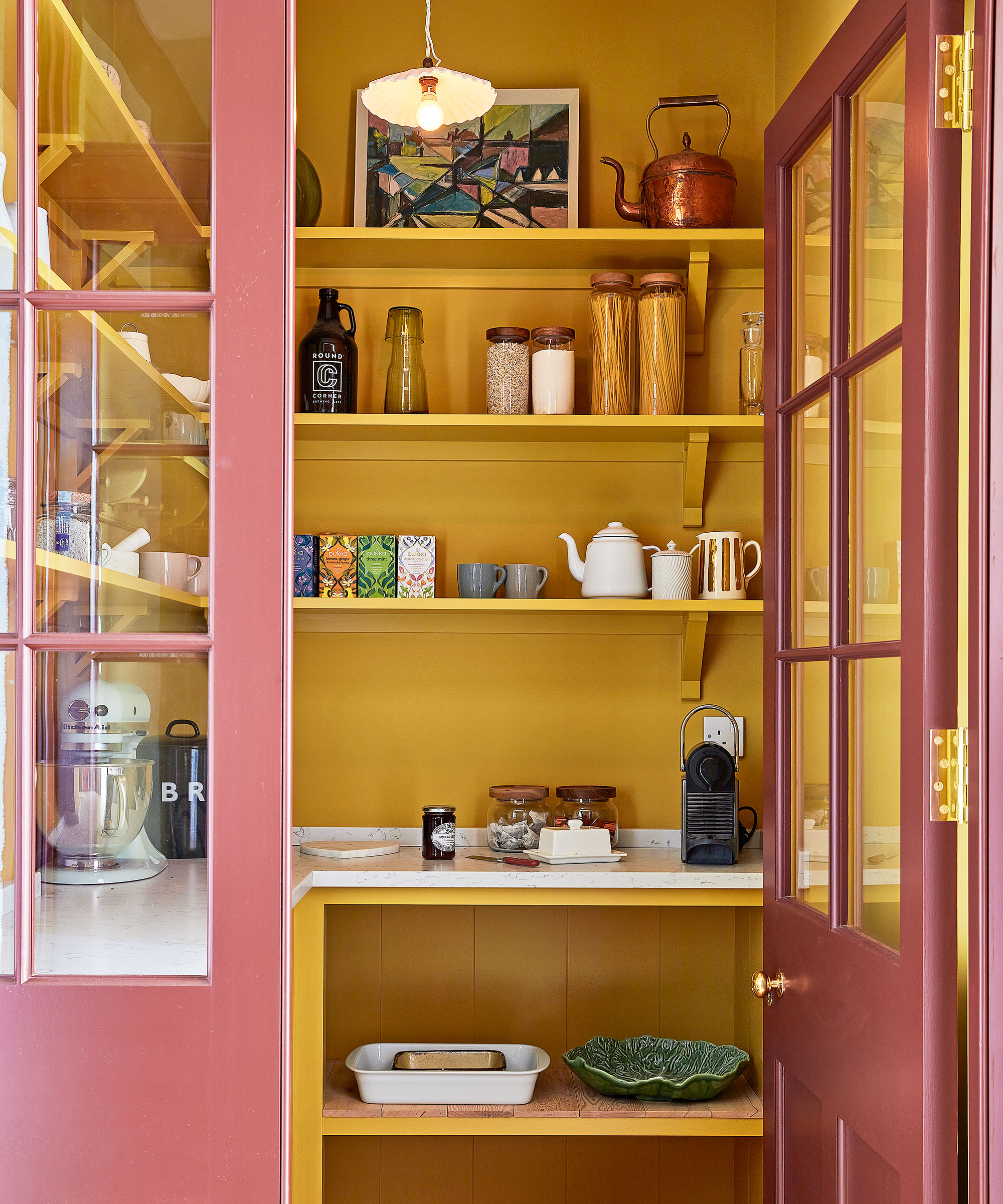
'Organizing the pantry is a January declutter rule I never swerve from,' says Jen Ebert, Digital Editor, Homes & Gardens. 'I ensure all foods near their use-by dates are at the front of shelves, freeze anything salvageable, and throw away anything that is beyond saving. I also use it as an opportunity to group dried and tinned foods together so that I can instantly see how much of any one food type I have. I find my food bills drop dramatically as a result for a while.'
‘I always like to keep spares of everything in my home, spare make up, toiletries, food (the list goes on), as it makes life a lot less stressful when I run out of something. However, I don’t live in the biggest apartment, so in order for my space not to feel cluttered and overwhelmed with all manner of spare items, I regularly do inventories to double check what I’ve actually got, and to ensure I’m not over-buying and filling my home with more stuff,’ says Zara Stacey, content editor at Homes & Gardens.
‘Inventories are something you can do all year round, and are especially good to do at the start of the New Year when many of us are decluttering, tidying and cleaning our homes. Taking regular inventories of your kitchen cabinets and being fully aware of the items in your home will only lead to a more organized and orderly space’.
10. Tidy up tableware and remove old or chipped pieces
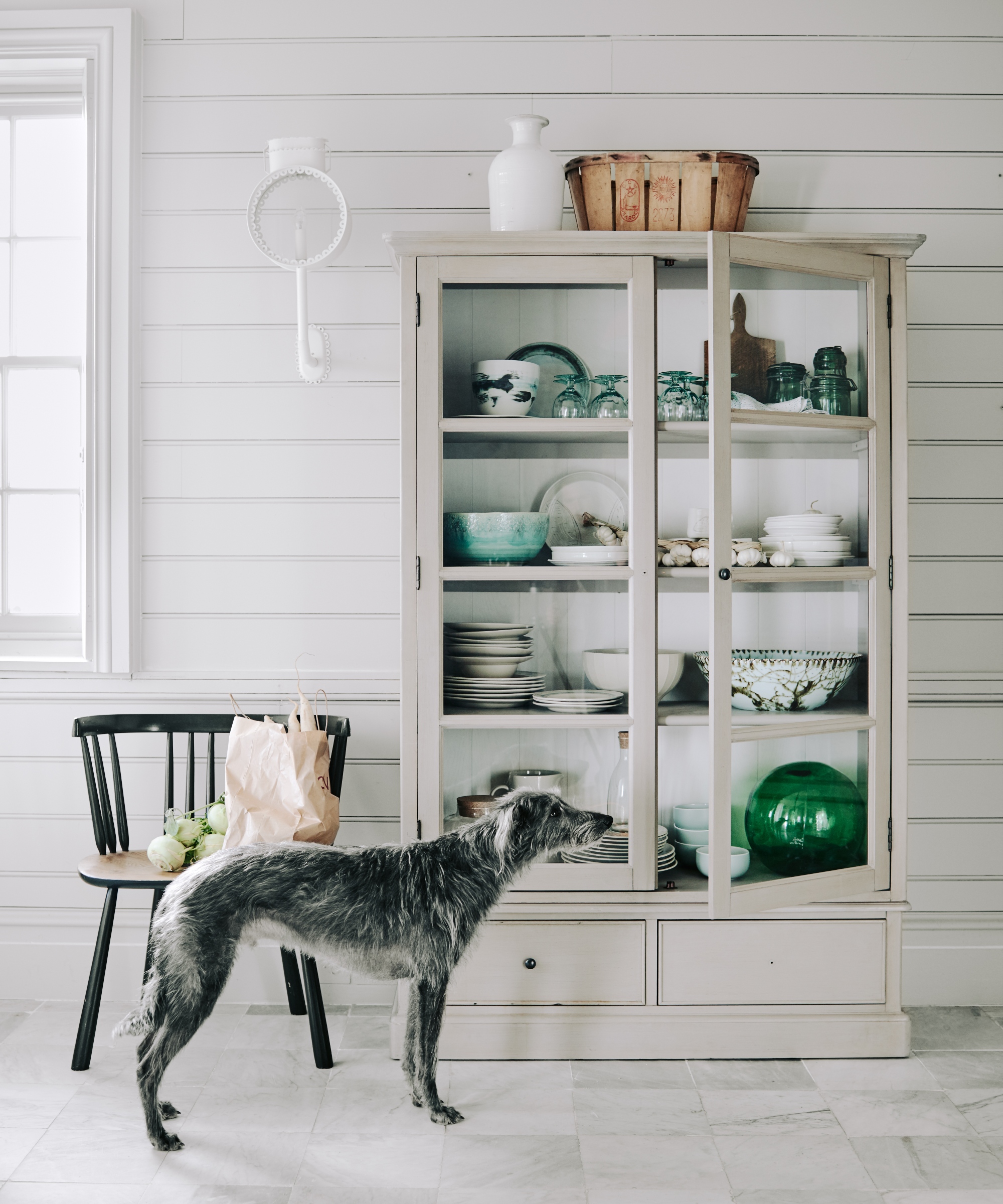
The best time to reassess your tableware collection is after a period of hosting. Having had guests around, you will be more aware of which dinnerware and serving wear you deem fit for show and which you want to hide at the back of the cabinet.
Any pieces you don't reach for or any pieces that are chipped or well worn should be cleared out to make space for your existing collections – or to buy new dinnerware sets to impress.
11. Put things back logically for clutter-free functionality
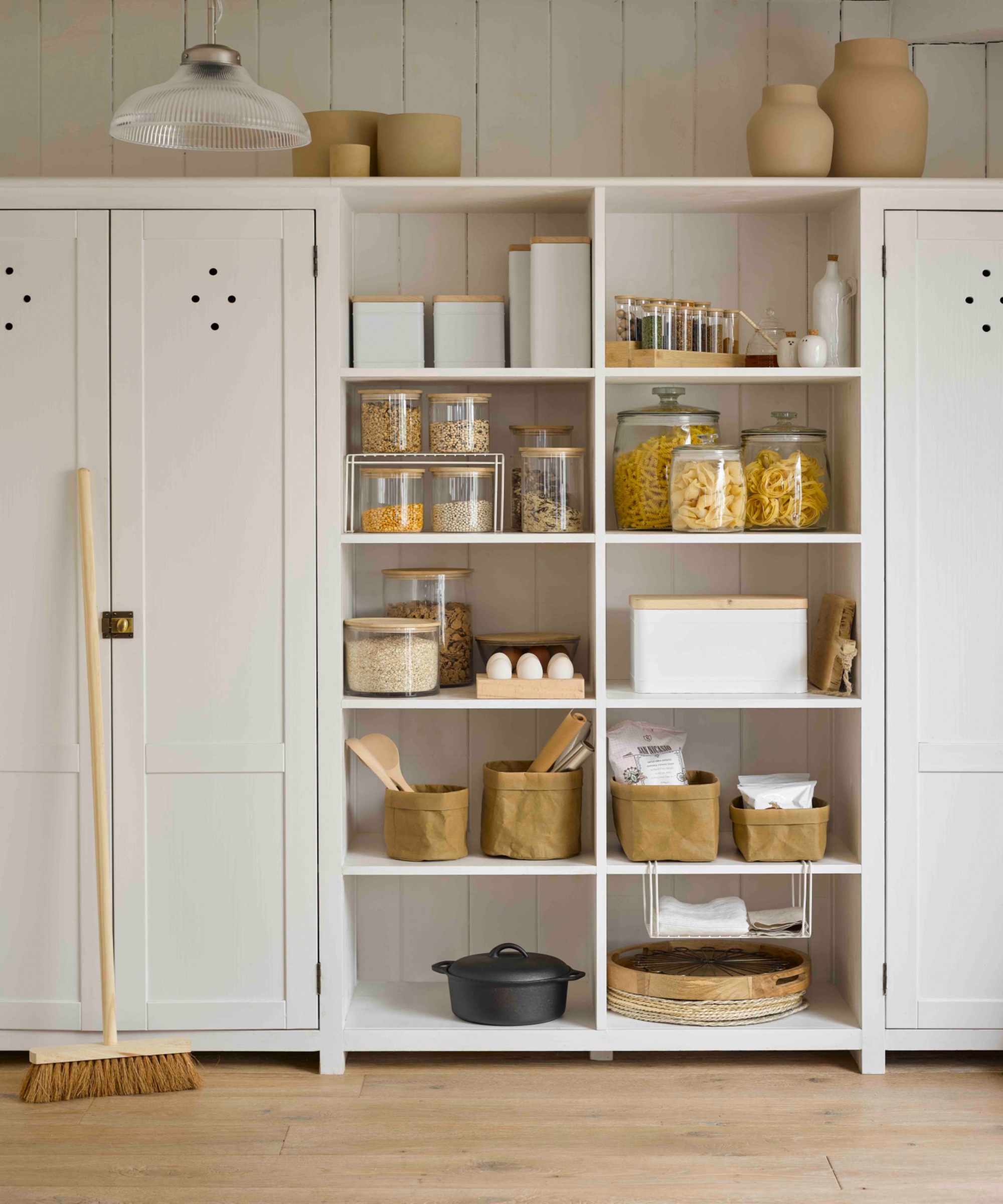
A large part of making a space look less cluttered is establishing good systems of organization. When putting your food and appliances back in your kitchen cabinets, carefully consider how often you use them, as well as their size, to logically reorganize your space.
If possible, position items so that you can see everything that you have at a glance, with taller items in the back and smaller ones at the front. The only exception to this rule is keeping items you use regularly, like oil bottles and seasoning, together in an accessible spot – usually towards the front of cabinets or on a countertop. Place heavy items like stand mixers on mid- to low-height shelves so that they are easy and comfortable to access.
12. Unload your kitchen of 'uni-taskers'
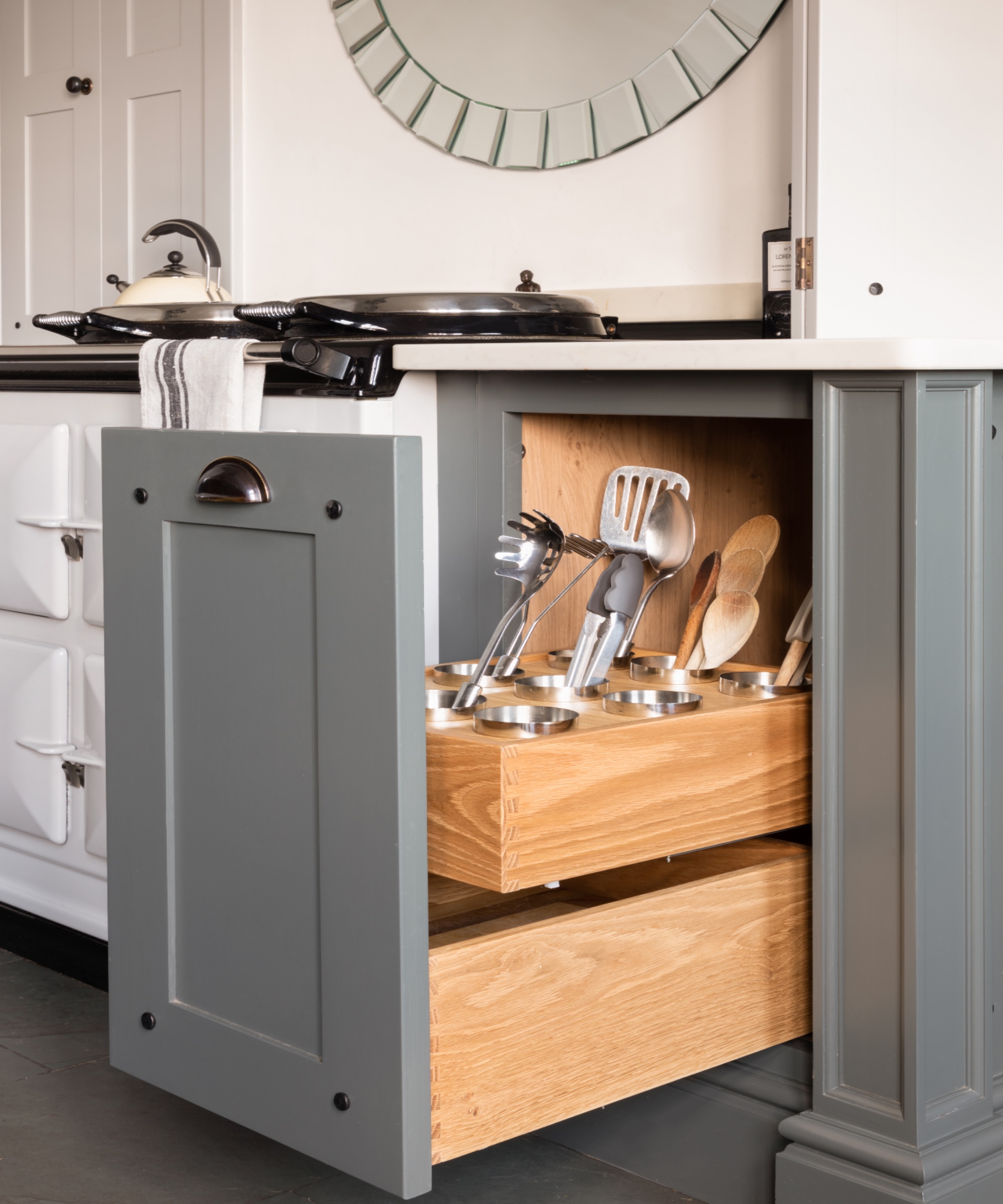
We are all guilty of buying a strange kitchen tool that only serves one purpose because it looked helpful, or the marketing was strong. But half the time these 'tools' end up laying in a drawer and cluttering up much-needed storage after being used once or twice.
These novelty 'uni-taskers' are better off in a donation pile, or sometimes even in the trash.
13. Tackle your home office desk
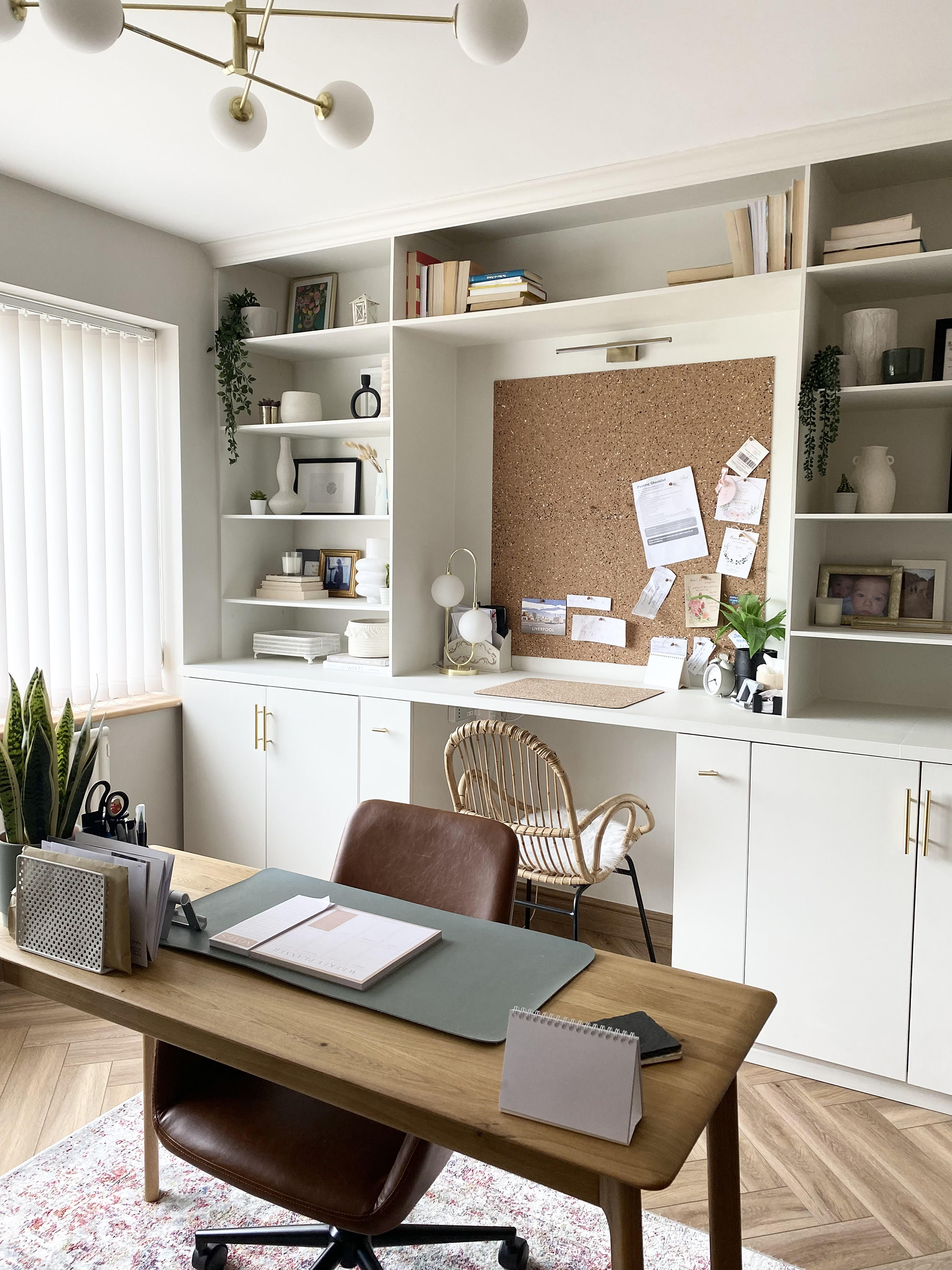
With the rise of home offices, yet another space needs to be kept neat and organized. Tidy spaces are conducive to a tidy mind, so organizing a home office at the start of the new work year should perhaps be a priority if you do not have time to declutter your whole house in January.
Start by organizing your desk.
‘Paperwork often gets put aside throughout the year; this tends to build up over time, so have a review of all your paperwork and filing, decluttering those you don’t need, and starting fresh for the new year ahead,’ advises Craig Hoareau, managing director of A Tidy Mind. ‘Set a system for incoming paperwork to prevent build-up and only keep what you really need.’
Take the time to transfer useful information from old diaries and calendars to new ones before throwing them out. Although some of us may find it tempting to hold on to old diaries and notepads ‘just in case’, it can lead to a very full drawer in no time – and half the time we never look back into them anyway.
Better yet, digitize your notes so that your important dates and documents are accessible wherever you are, whenever you need with no paper clutter at all.
Most office desks have a stack of stickers, a cluttered pen-pot, and enough notebooks to open a stationery store but in this digital age, they are often not used very often. If you are concerned about getting rid of something and then needing it down the line, cut your collection down to one or two notebooks, a single stack of notes, and a few reliable pens at first to have backups.
Rearrange remaining items so that your most often used is at the front of your drawer or on the desk itself, with less commonly touched stationery in cabinets.
14. Reduce visual clutter by getting cable tidies
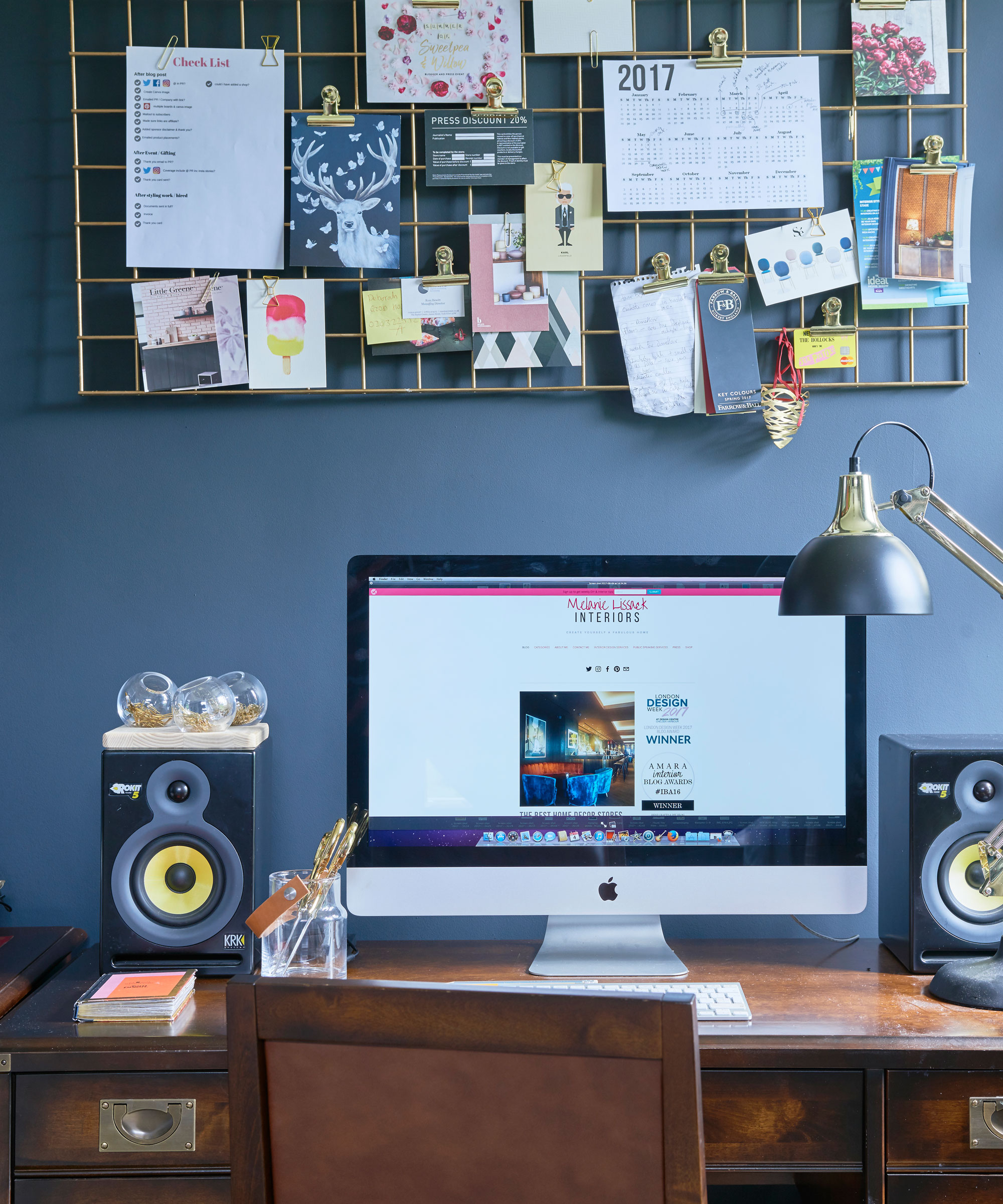
If you have a traditional work-from-home set up with a standing monitor (and perhaps even a laptop to the side) then hiding cables can be a game changer in reducing visual clutter and making your workflow more streamlined.
These cable tidies on Amazon are perfect for shutting away wires and concealing them on a desk, allowing for a much more aesthetic-looking desk space.
OHill Cable Clips – $7.99 at Amazon
These 12 neat cable cord holders will help tame those cluttered cables and cords around your desk.
15. Move on to the bedroom, starting with the closet
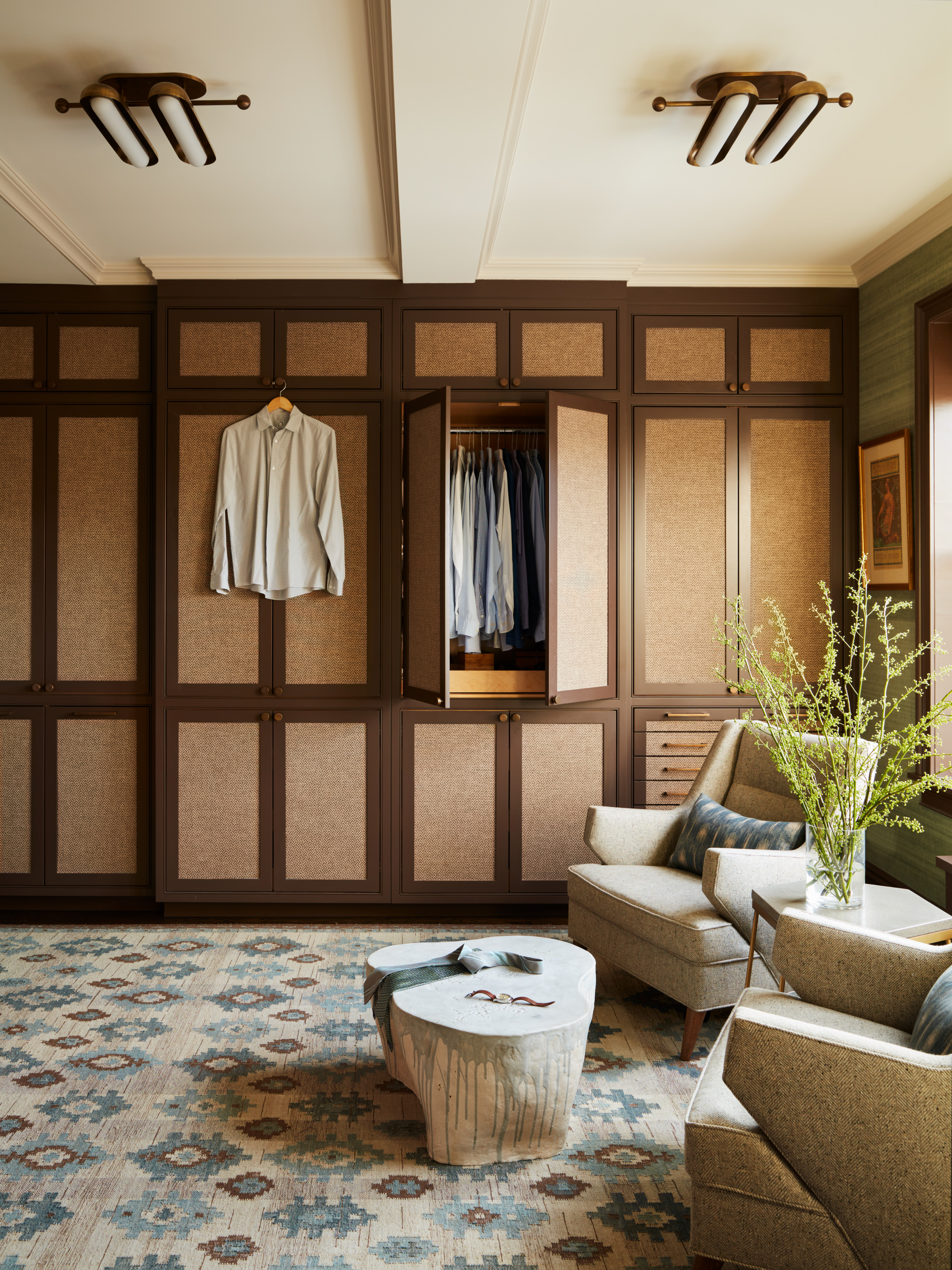
Organizing a bedroom is one of those tasks that constantly needs doing – as does organizing a closet, no matter how neatly you try to put things away each time.
‘As we are halfway through winter it is a good time to evaluate your wardrobe,’ Craig Hoareau, managing director of A Tidy Mind suggests. ‘Declutter any clothes you haven’t worn and likely will not wear. Donate them or find a business that can sell them on your behalf. Avoid trying to sell them yourself as this will add more admin time to deal with.’
‘I would not recommend you do it all at once (unless you have a spare 8 hours!),’ adds award-winning home organizer Lucy Mansey, founder of Organized by Lucy. ‘Small and steady wins the race, so tackle an area at a time. Start by getting everything out, and really asking yourself ‘what do I love?’, ‘what do I feel good in?’ And ‘what serves a positive purpose?’. Try not to hold onto items you haven’t worn in the last seasonal year. From there, create piles to keep, store and donate. Once you have done this, look at the space you have available to you and decide what fits best where.’
'Get that sock drawer under control in 2023. How many are missing their partner or have holes in them? And how many do you actually wear? Dump it out and match them up,' Janelle Cohen, founder of Straighten up by Janelle suggests.
'Start the new year off fresh by cleaning out your wallet and purse,' Janelle adds. 'These areas are often overlooked yet we use them every day. Reaching in your bag to find what you need should be simple and stress-free! Empty it out and add back in your must-haves. Add gift, reward, and transit cards to your digital wallet on your phone to reduce extra items on your daily. Throw away anything you don’t need and take pictures of business cards and add them to an album on your phone.'
17. Straighten up surfaces
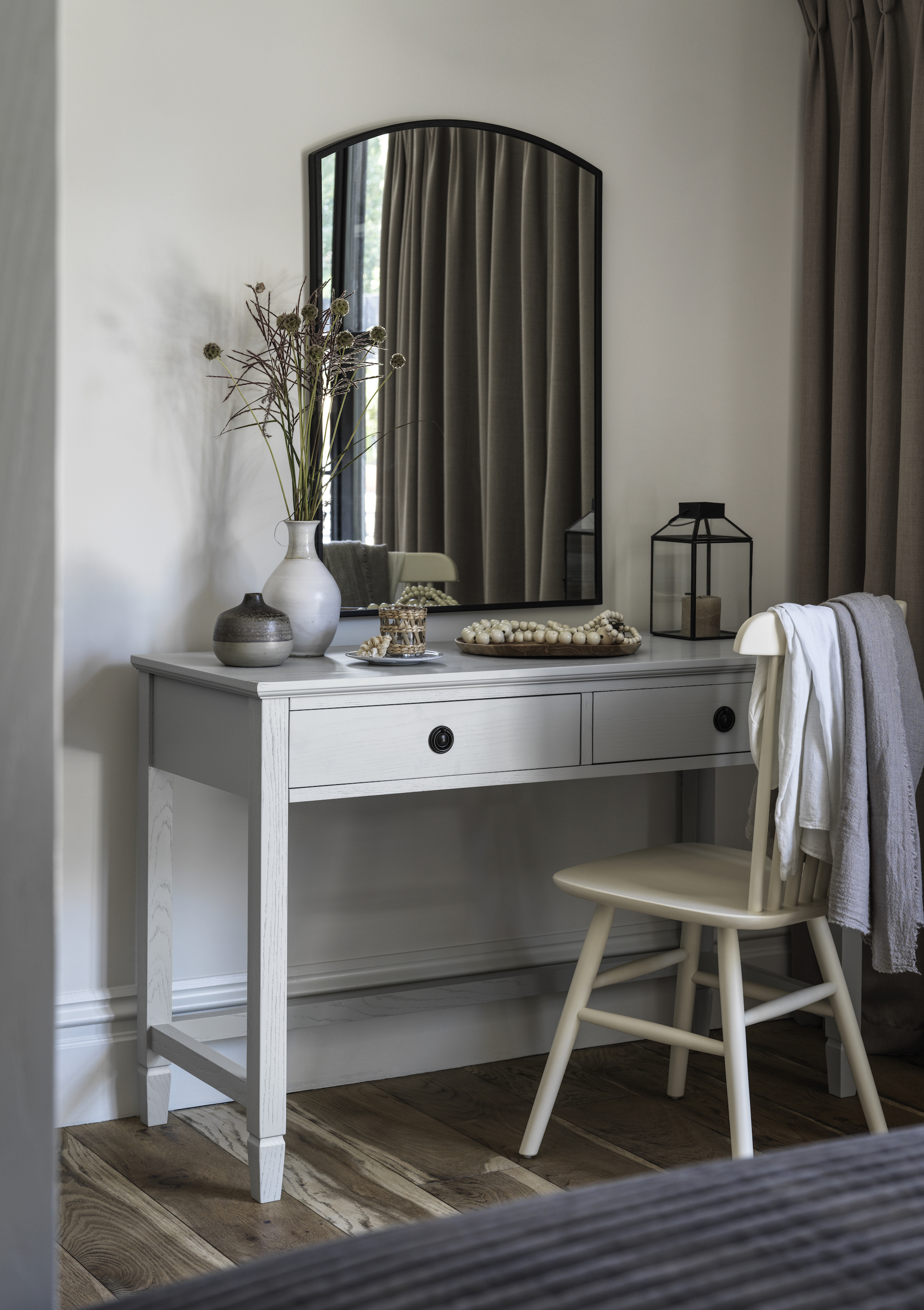
Clearing out a bedroom is not all about the closet, however. The spaces around your bedroom, especially your bedside tables and bedroom vanity are often hotspots of clutter – and it could be bringing down the overall look of your space, bedroom expert Laura Burnett from Feather & Black warns.
‘One of the simplest, yet most effective ways of adding a luxurious look to your bedroom is avoiding clutter. Having numerous, often mismatched items around the room can be distracting. Keeping a clean and clear space can convey luxury with very little effort. Large storage options can help you achieve this look, whether you opt for a statement chest of drawers or an ottoman storage style bed,’ she suggests.
We have even compiled a list of the best places to buy bed frames for you, so half the hard work of organizing your sleep space has been done for you.
17. Rid your room of blue light devices to aid sleep
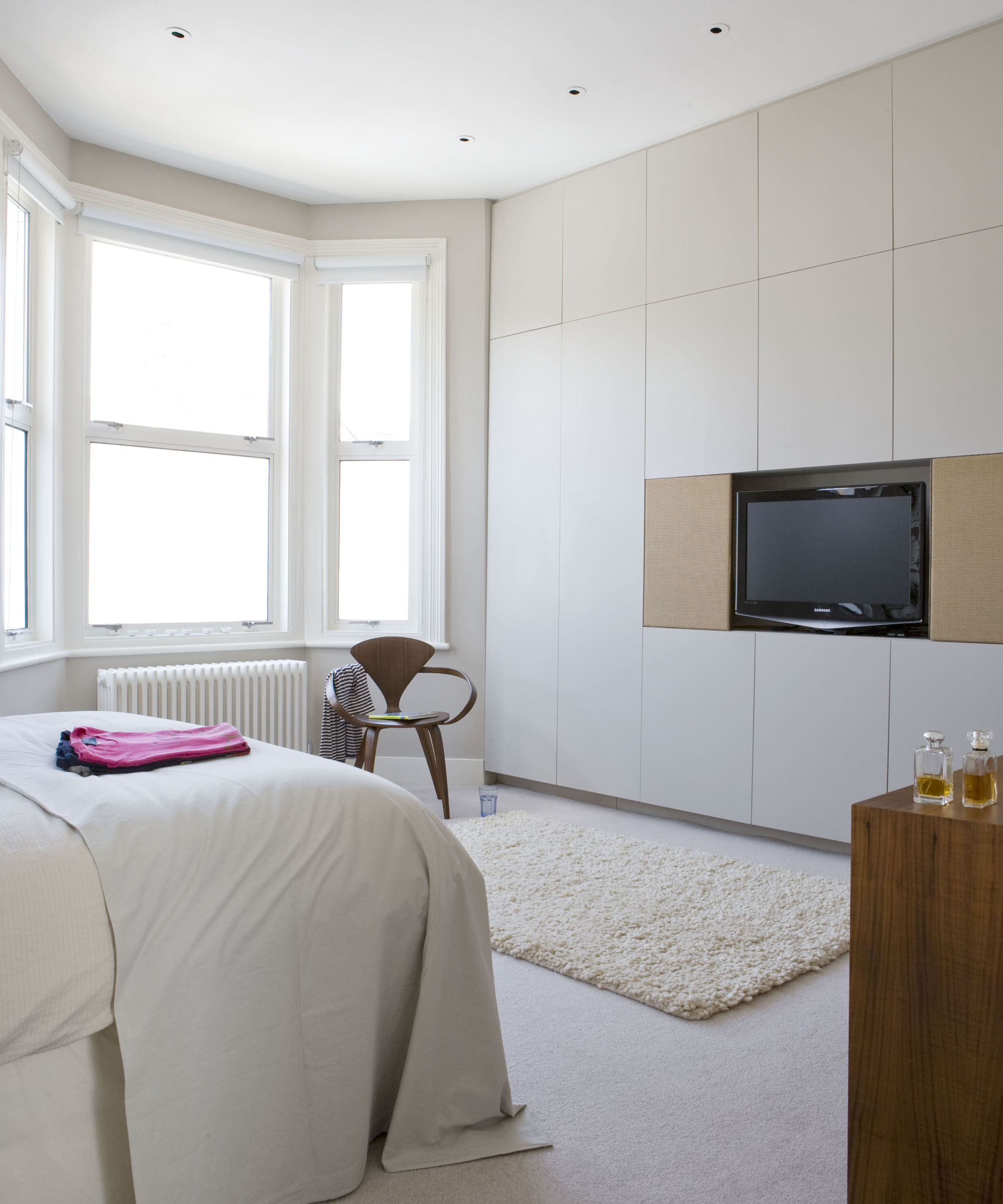
'Our lives are dominated by screens. Whether computer monitors for work, TV screens for gaming, or smartphones for literally everything, we’re almost always fixated on one screen or another. And where there are screens, there’s blue light,' say sleep experts at Dormeo. 'And where there’s blue light, there’s a risk of sleeplessness.
'Blue light comes from the sun. And, during the day, it can help you stay alert and offers up a mood boost. The problem, however, stems from the fact that screen-based technology also emits blue light, which inhibits the production of melatonin; a hormone that helps you to fall asleep.'
Any device that emits blue light, from phones to TV screens, has no place in the bedroom. Move TV screens away from sleep spots, and consider relocating chargers from your nightstand to the living room to encourage leaving your phone in another room each night before bed.
18. Tidy up the bathroom, starting with the vanity
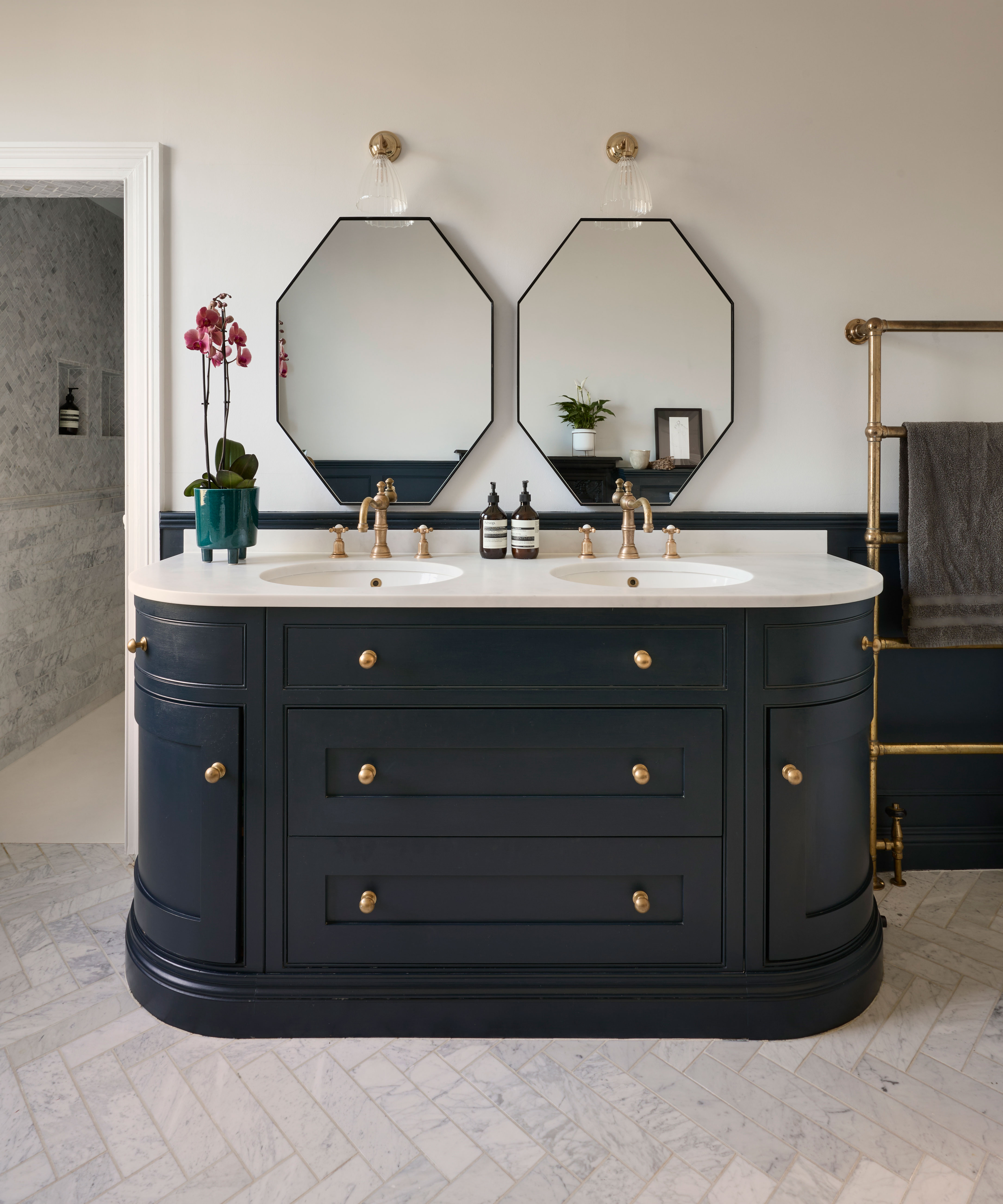
Depending on its size, and the amount of bathroom storage you have for linens and toiletries, organizing a bathroom can sometimes be one of the trickier job to tackle in a January declutter. Breaking it down into zones can help make it feel a little more manageable.
Reassessing your vanity organization and investing in drawer organizers can make sure bathroom essentials like hairbrushes, lint rollers, make-up, and washes can all be found and picked up swiftly. It also helps to highlight when something is missing from its place.
'Determine what items you need to organize within each space and then look for storage bins, boxes, and baskets that work for you. Implementing a smart storage system will result in a much easier and smoother day-to-day life,’ adds founder of AMC Design, Ann Marie Cousins.
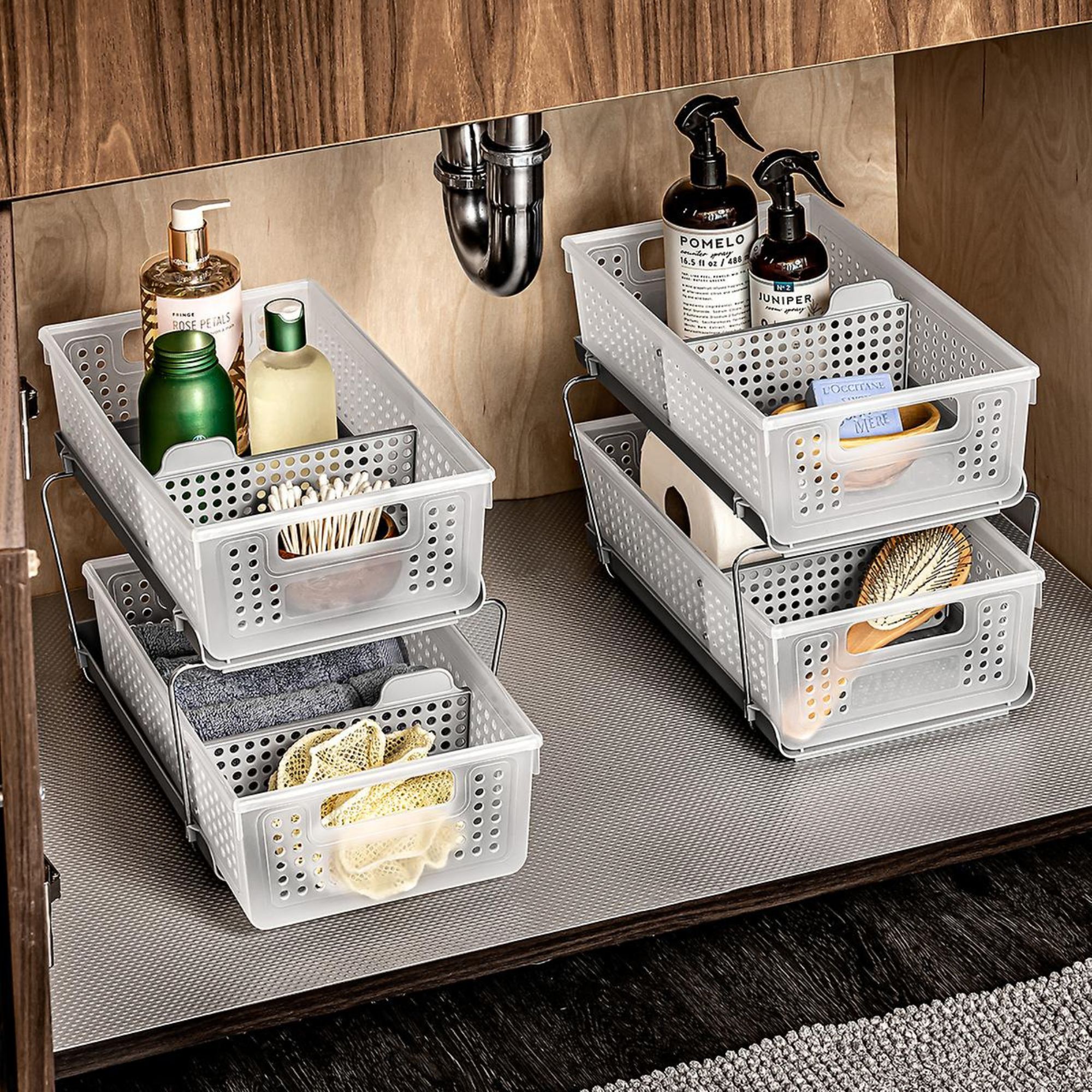
Make the most of cabinet space with tiered storage that beautifully organizes bath accessories and supplies.
19. Move on to the medicine cabinet
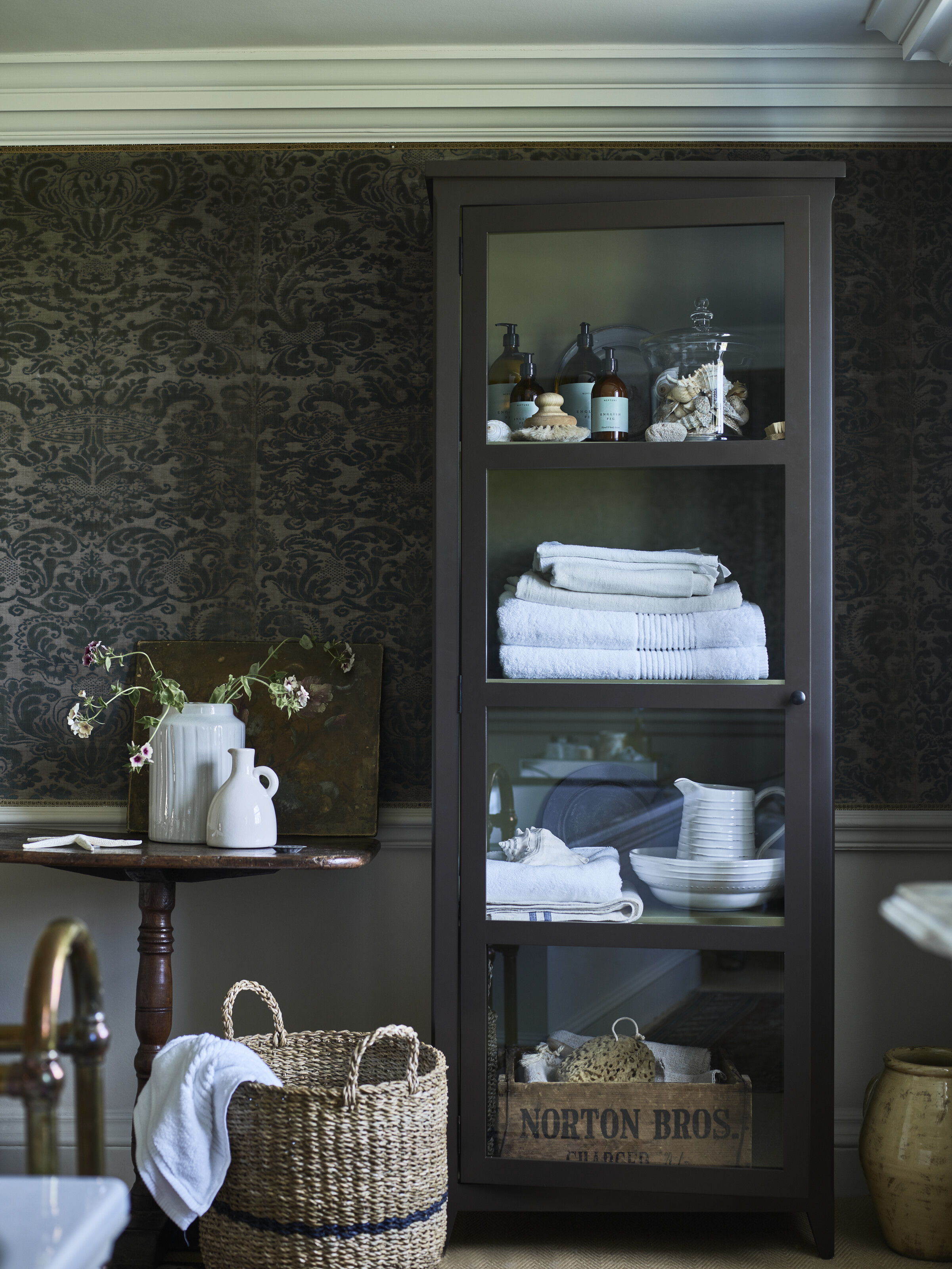
‘The main priority of a bathroom is cleanliness. However, it is next to impossible to keep a space clean while you’re battling clutter, which is why I aim to organize my medicine cabinet this month,’ says Jennifer Ebert, deputy editor (digital) for Homes & Gardens.
‘After all, dusty, out-of-date prescriptions could make you worse rather than better. We're a nation of people who can't throw things away, with many of us admitting to being hoarders, myself included. Any medication past its use-by-date could be dangerous. They may also be ineffective or could cause further harm as a result of degraded ingredients, so if in doubt, take them to the pharmacy to be disposed of safely. Can't find an end date on the packet? Check for changes in appearance and texture.
‘Prioritize those products that you have to keep or know to be useful. If you find you have a lot of sealed (non-medical) products still within the expiry date, check if a local shelter or donation bank could use them; many people don’t often think to donate them.’
20. Lay out linen closet contents to decide what to keep, and what should go
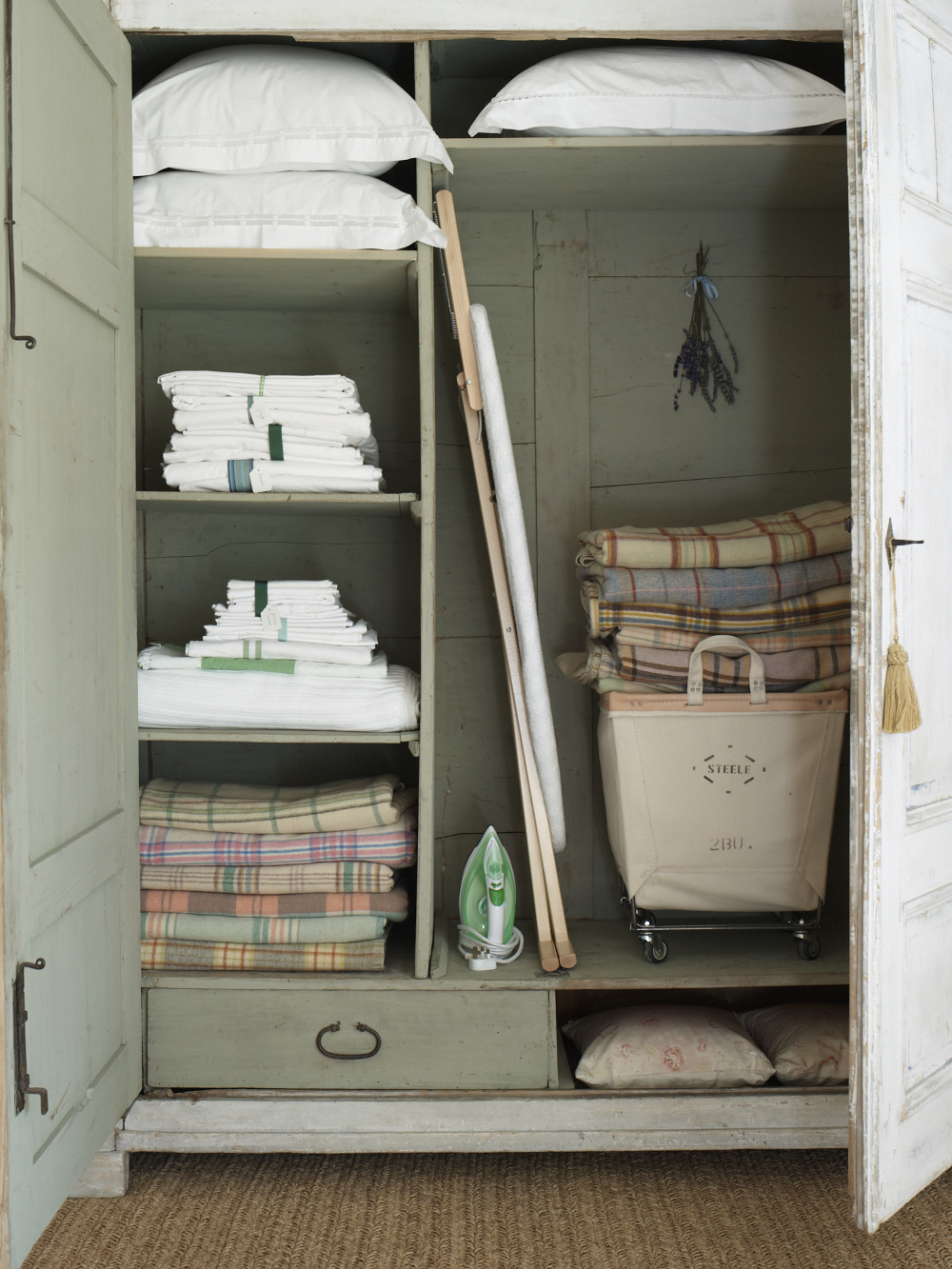
‘Don’t neglect organizing the linen closet when decluttering your home in January. Sort through your towels and bedsheets, taking out any that are past their best and relegate them for use when cleaning the house, or for pets if you have them,’ suggests Jaclyn Turner, head of eCommerce at Homes & Gardens.
‘Plus, the January sales are one of the best times to replace old sets with the best linen sheets you can afford to help achieve that goal of sleeping better in the New Year'.
21. Step outside to the car and garage

Don't stop inside the house, consider your garage and car too! While organizing a garage may be the last thing on your mind if you live somewhere that is cold in January, there is no better time to tackle such a tedious storage space as a whole house declutter.
When decluttering a storage space as large and varied as a garage, start by creating three piles: one for keep, one for donate or sell, and one for trash. Tackling one shelf, area, or box at a time, sort the items as you remove them before putting each thing in the keep pile back, or putting them to one side to go elsewhere as you sort your way through the space.
Try to keep like things together as you go, moving cycling things together, cleaning items together, and so on. It might help to invest in a label maker to help label boxes and shelves to find things more easily in the future.
While in your garage, don't forget about decluttering inside your car too to limit distractions while driving. 'Your car console is a great spot to organize and give it purpose and function,' Janelle Cohan says. 'Over the year clutter can really accumulate in your car. There is no better feeling than opening your console and easily being able to find your essentials, like chapstick or a Band-Aid. This should be the year you take control of the smaller areas that we use daily.'
DYMO Label Maker – $48.31 at Amazon
Compact and lightweight for portability, making it easy to label just about anything, anywhere.
Does decluttering help the January blues?
Decluttering and cleaning have been shown to help improve low mood and anxiety, meaning that a January declutter could help to alleviate some of the effects of the January blues. Moving around your home with the curtains open and ticking things off a to-do list is a mood booster in and of itself, so coupling it with refreshing your space will help improve your mindset.
What should I remove first when decluttering?
When decluttering you should start with paper items that are easy to collect and dispose of. This helps to get the process started and gives you a sense of accomplishment, spurring you on to complete the task. Avoid starting with the larger tasks, such as emptying out kitchen cabinets or your closet, as this will quickly lead to fatigue and prevent you from completing the job properly.
Sign up to the Homes & Gardens newsletter
Design expertise in your inbox – from inspiring decorating ideas and beautiful celebrity homes to practical gardening advice and shopping round-ups.

Chiana has been at Homes & Gardens for two years and is our resident 'queen' of non-toxic living. She spends most of her time producing content for the Solved section of the website, helping readers get the most out of their homes through clever decluttering, cleaning, and tidying tips. She was named one of Fixr's top home improvement journalists in 2024.
-
 Kevin Bacon and Kyra Sedgwick's rustic kitchen island is stunning, but controversial – designers say you can get the look without the hassle
Kevin Bacon and Kyra Sedgwick's rustic kitchen island is stunning, but controversial – designers say you can get the look without the hassleA popular material finds an unorthodox home in the couple's kitchen, but experts disagree on whether it should be used – here's how to do it instead
By Sophie Edwards
-
 How to grow grapefruit for homegrown sweet and tangy, highly nutritious harvests – a fruit tree expert shares their planting and care tips
How to grow grapefruit for homegrown sweet and tangy, highly nutritious harvests – a fruit tree expert shares their planting and care tipsFrom planting to harvesting, this is all you need to know about grapefruit trees
By Drew Swainston
